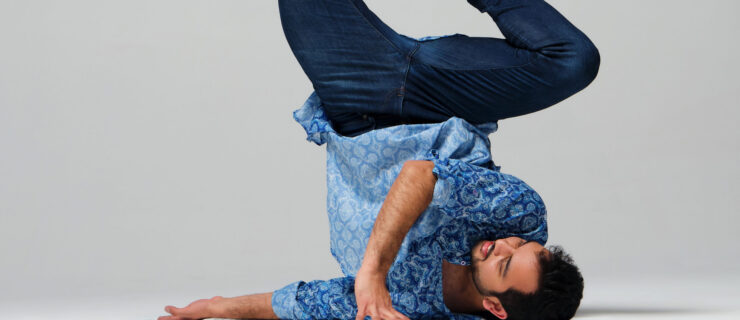Doctors Often Get These 6 Things Wrong in Dancers
Taking time off from dance is often inevitable when injury strikes. But receiving a misdiagnosis—and the wrong type of treatment—can prolong your recovery.
“A lot of doctors practice where they’ll only see one or two dancers a year,” says Dr. William Hamilton, a New York–based orthopedic surgeon specializing in dance medicine. Since most medical professionals aren’t familiar with the art form’s demands, we asked three doctors in the know about the most common missed or misdiagnosed conditions you should watch out for.
What Non-Dance Docs See: A clean X-ray
What You Might Have:
A stress fracture
Stress fractures can be difficult to catch for two reasons: The injury happens over time, and it rarely shows up on a regular X-ray. “You have to do an MRI or a bone scan to confirm it,” says Dr. Steven Anderson, a sports medicine practitioner who works with Pacific Northwest Ballet.
Watch for pain that is persistent, localized and doesn’t go away with simple measures, like taking a day off, icing or taking ibuprofen. If you continue dancing with this injury, you may eventually require surgery.
The Diagnosis:
Dancer’s fracture
What’s More Likely:
Another foot injury
Anderson warns of the generic “dancer’s fracture” diagnosis—doctors may use it as a catch-all term for a variety of foot injuries. A Jones fracture (a break in the fifth metatarsal, near the mid-foot), avulsion fracture (a problem associated with the peroneal tendon), Iselin’s disease (when a tendon attaches to a growth plate) and stress fractures can occur in the same general area, but they are distinct issues. Depending on the injury, you may require surgery, a cast, physical therapy or just a little rest and taping to stabilize the foot.
What It Looks Like:
Back strain or hip alignment issues
What It Might Be:
Spondylolysis
Spondylolysis, a weakening of the bone that causes pain in the small of the back, usually affects Caucasians and Asians with a genetic predisposition, during a period of rapid bone growth that occurs sometime between ages 12 and 16. “It’s worse with arching—things like doing jumps or arabesque,” says Anderson. It’s often mistaken for a back strain or hip alignment issue, and chiropractic manipulations can make it worse.
Catching spondylolysis right away is critical, because treatment is more effective if it’s started shortly after the onset of symptoms. “If you push through the pain, you end up with a permanent weak spot in your back,” Anderson says. Further complications, such as a slippage of the spine, could end your career.
What It’s Mistaken For:
A piece of bone has broken off your ankle
What You Might Have:
Os trigonum syndrome
About 25 percent of the population has an os trigonum, an extra bone in the back of the ankle. “It’s not a fracture, it’s not a bone shift and you don’t have to treat it in a cast,” says Anderson. But, says Hamilton, “depending on its size, an os trigonum can limit your relevé on demi-pointe.” If it becomes painful, try physical therapy or taping. Severe cases may require a cortisone injection or surgery.
The Issue:
Hip impingement
What Makes It Tricky:
It’s hard to determine the cause
Hip impingements, when the ball of the femur compresses against the front rim of the socket, are a common cause of pain in dancers due to their extreme range of motion. The tricky part is identifying—and correctly treating—the cause. You may have pain due to a soft-tissue impingement (like a torn labrum or inflammation in the joint capsule) or a bony impingement (caused by thickening of the neck of the femur or a bone spur off the joint). “It’s a can-of-worms diagnosis,” says Anderson.
If you have sharp pain in the front of your hip or restricted motion in développés or battements, you likely have some form of hip impingement. But don’t rush into surgery. Even if you have a torn labrum, it might not be the cause of your pain, says Anderson. He recommends conservative treatment first, which might involve physical therapy to retrain your movement patterns and work on flexibility.
What Doctors See:
A slim dancer, possibly one with female athlete triad
What Gets Missed:
Polycystic ovary syndrome
In slender female dancers, polycystic ovary syndrome may go undiagnosed or overlap with a diagnosis of the female athlete triad, cautions Dr. Dorothy Fink, a New York–based endocrinologist. Signs of PCOS may include irregular periods, extra follicles in the ovaries, high levels of androgens or testosterone (shown through excessive hair and acne) and being overweight.
But you don’t need all those characteristics to have PCOS, says Fink. Doctors might dismiss the possibility in dancers because they tend to be slim, whereas the typical textbook case of PCOS presents itself in overweight women. And, it’s also possible to have both PCOS and the female athlete triad.
PCOS can have a domino effect: Irregular periods mean your hormone levels are off, which can affect bone health, making you more susceptible to injuries like fractures. Fink ultimately advocates for nutrition-based solutions to regulate your hormone levels and optimize ovary function. Energy balance is key to getting your menstruation back on track. For dancers, this might mean eating more calories and assessing if your diet has enough variety to fuel your active lifestyle.




